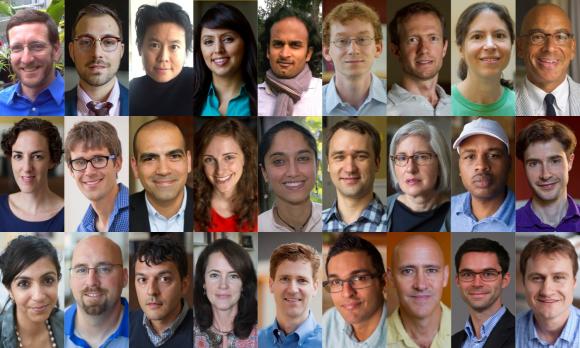PROVIDENCE, R.I. [Brown University] — Faculty hiring for this academic year has brought more than 30 new scholars to the Brown campus — a strong year, but a different mix of specialties. The ranks of regular University faculty stood at 715 for the start of the academic year, with a few more offers pending. An additional 1,289 clinical medical faculty are at work in area hospitals and health care facilities, including 32 new or reappointed clinical faculty members.
Where last year brought significant new hires in STEM disciplines, including five faculty for the new School of Engineering, the University has attracted a greater representation in the humanities and social sciences this year.
“Five is a significant amount of hiring for one unit,” said Kevin McLaughlin, dean of the faculty. “This year, there were five new faculty with appointments at Watson Institute, supporting the re-launch of the Watson under its new director.”
Nearly half of the new faculty members are working in the social sciences. The Department of History has four new faculty, including a new Lippitt Professor, an important position in a department with traditional strength in colonial American history and a connection to the John Carter Brown Library, McLaughlin said. Four of the Watson Institute’s new faculty were hired into named assistant professorships: the Joukowsky Family Chair, the Richard Holbrooke Chair, the Frank Stanton Chair, and the Mahatma Gandhi Chair.
A third of the hires are working in the arts and humanities, including a senior professor of literary arts and the inaugural John Hawkes Professor, a Humanities Initiative position, in English and humanities. There were good hiring opportunities in religious studies, McLaughlin said, with two new assistant professors and a third in Judaic studies.
Nine of the new faculty hires were from under-represented minority groups. Overall, about 60 percent of this year’s hires were at the assistant professor level. Profiles of the new faculty members, organized by discipline, are available online.
This fall after three years as dean of the faculty, McLaughlin accepted appointment to a new five-year term. With the exception of the Division of Biology and Medicine and the School of Public Health, nearly all Brown faculty report through their department chairs to the Office of the Dean of the Faculty. Janet Blume, associate professor of engineering, has also agreed to remain in office as senior associate dean of the faculty.
“We work on everything with the departments — retention, recruitment, hiring plans, day-to-day and week-to-week issues,” McLaughlin said. “Now, as the strategic plan and the new campaign move forward, we are trying to look ahead 10 years, mapping out goals and timelines.” In recognition of expanded responsibilities, Anne Windham and Joel Revill have been promoted to associate deans of the faculty.
All but one of this year’s new faculty are filling vacancies left by retirements or transfers. McLaughlin expects that next year’s hiring cycle will remain at the same level and that carefully planned faculty growth will be possible when new resources are developed during the campaign.
“Still,” he said, “there are opportunities every year to recruit really good people — senior as well as junior people — to positions on the Brown faculty.”

